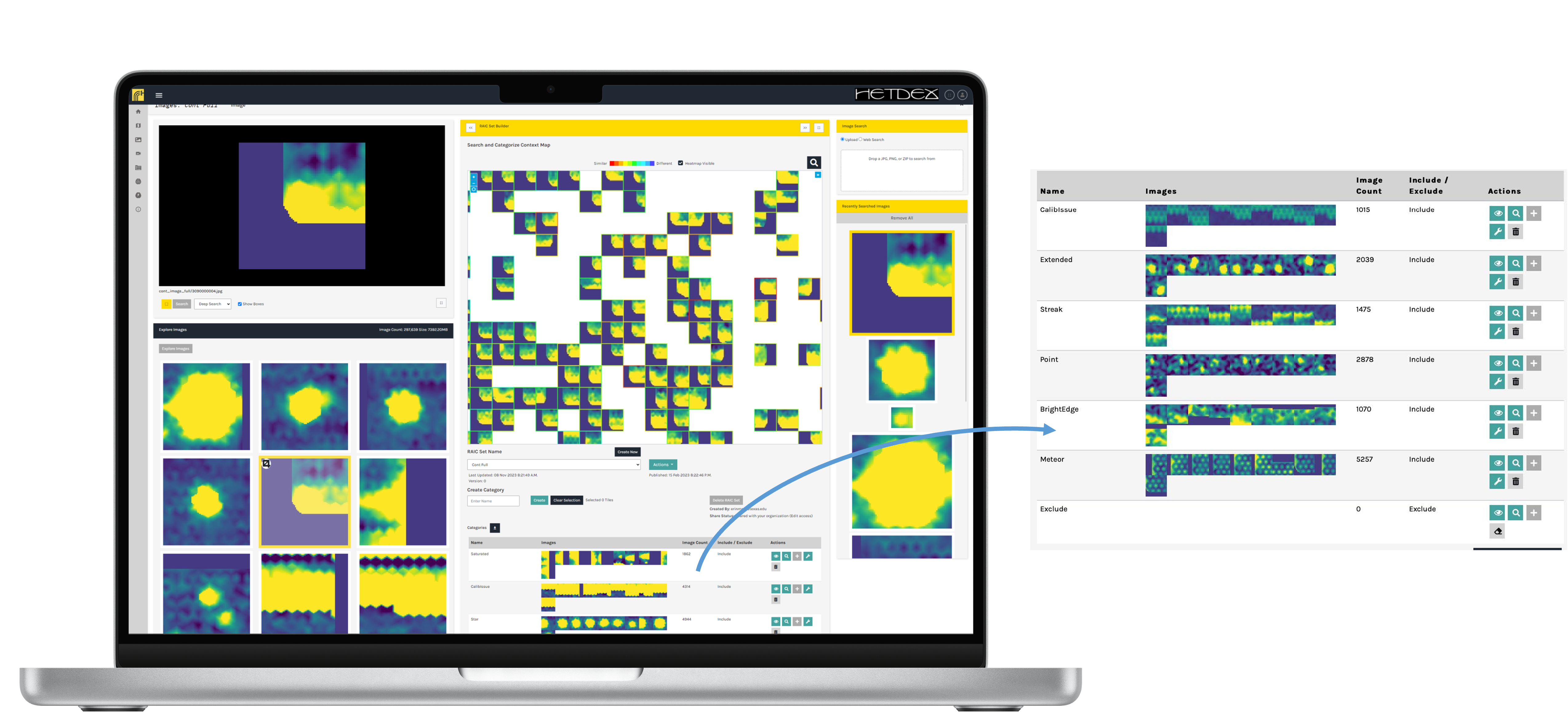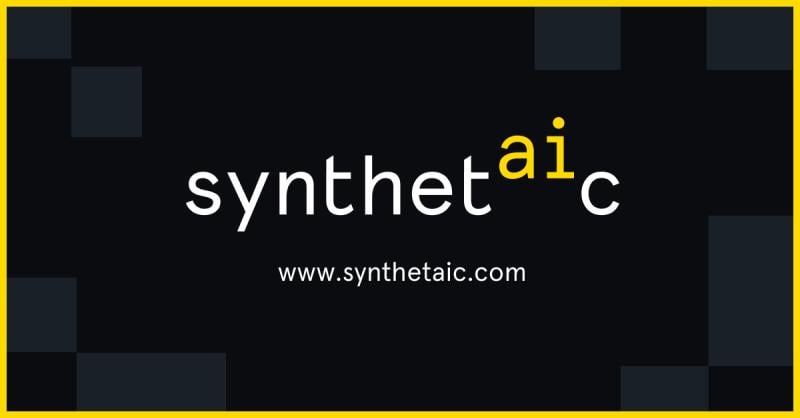Synthetaic's 2023 Year in Review
It was a banner year for Synthetaic. A certain high-profile balloon hunt may have put us on the map in a big way, but that was only one of RAIC’s many adventures this year — not to mention the product and partnership work that elevated our technology’s first-of-its-kind capabilities to new heights.
Let’s look back at Synthetaic’s 2023, and ahead to 2024.
In 2023, RAIC was a co-explorer of air, land, sea, space, cyberspace, and more. It was trusted by investigative journalists, scientists, companies, and federal agencies to find the answers locked inside countless types of image data. We proved this year that when it comes to your data and RAIC, if you can see it, you can search it.
The Depths of the Ocean, The Depths of the Universe, and Everything in Between
This year, RAIC was put to work on just about every type of image data you can think of. From searching side-scan sonar for manmade objects on the ocean floor, to monitoring thermal infrared imaging from a security drone, to detecting unique objects in bodycam footage, RAIC proved the depth and breadth of its abilities.
Here are a few of the biggest adventures RAIC went on in 2023.
What Goes Up Will Be Found
The most high-profile of RAIC’s accomplishments this year came back in February, when Synthetaic successfully traced the full path of a suspected Chinese spy balloon in geospatial satellite data. By doing so, we demonstrated a few key capabilities of RAIC:
- Incredible speed-to-insight. RAIC’s initial search, of satellite imagery taken over South Carolina, took only two minutes to return a match.
- Unmatched scale. For the 12 balloon sightings we achieved, we searched a swath of satellite data equivalent to double the entire Earth’s landmass.
- Identify rare objects in your data. While traditional models can be trained on abundant objects, (i.e. ships and roads), the same isn’t true of something like a spy balloon, for which there are little to no training images. Not a problem for RAIC, which projects data into a vector space, rendering it completely searchable on a pixel-by-pixel basis based on just one example. In this case, that example was a hand-drawn sketch estimating how the balloon might look in the data.
Synthetaic’s feat was reported in Space News and Wired — and then The New York Times, who collaborated on further exploration to fuel an in-depth visual investigation of the balloon.
 |
 |
| The hand-drawn sketch that RAIC used as a seed image to find the suspected spy balloon | A .gif of processed Planet Labs imagery, showing the balloon near its origin |
Working with BBC’s Panorama, we then used RAIC to investigate reports of similar balloons over East Asia.
Read more about Synthetaic’s global balloon hunt:
- How Our AI Tracked the Chinese Balloon in Millions of Square Miles of Unlabeled Satellite Data
- RAIC Discovers More Surveillance Balloons — This Time Over East Asia
Investigating the Secrets of the Universe
RAIC was also deployed to explore the depths of the early Universe. The Hobby-Eberly Telescope Experiment (HETDEX), a project seeking to measure dark energy, used RAIC to label artifacts in their massive dataset of multidimensional telescope imagery. As a result, they increased their usable data by about 50%.
 HETDEX uses RAIC to categorize artifacts in their spectral data.
HETDEX uses RAIC to categorize artifacts in their spectral data.
Not only has RAIC’s small-but-essential role in uncovering the mysteries of the universe captured our imagination, it’s showcased some of the tool’s unique capabilities:
- Image-agnostic. The telescope imagery data used by HETDEX isn’t “imagery” in any traditional sense: it’s spectral data, which captures a “cosmic footprint” 1,000 datapoints deep for each point of the Universe being measured. Still, by ingesting the data as image files, HETDEX has been able to seamlessly analyze it in RAIC.
- Interactive and flexible. Exploring the vast dataset in RAIC, the HETDEX team began to detect patterns that otherwise may have gone unnoticed. Erin Mentuch Cooper, HETDEX Data Manager, said: “This is what scientists love to do. When something works, we want to explore it. RAIC allows you to see what works and what doesn’t.”
- Incredible speed-to-insight. We mentioned this above, but it bears repeating. Mentuch Cooper said, “In RAIC, instead of having to manually label hundreds of thousands of examples to build a model, we were able to prototype from a single example, and iterate at a quick pace.”
We’re proud that RAIC is trusted by scientists and researchers to open new avenues for discovery.
Read more about HETDEX and RAIC.
An Unexpected Discovery on Palmyra Atoll
Another thrilling RAIC-powered discovery in 2023 came via The Nature Conservancy (TNC). Alongside the U.S. Fish and Wildlife Service and Island Conservation, TNC protects Palmyra Atoll, a wildlife refuge and research center. As part of this work, TNC was using RAIC to observe seabird populations.
Much to TNC's surprise, RAIC’s automated analysis of their drone photography surfaced two species that were thought to be locally extinct. Alex Wegmann, Island Resilience Lead Scientist at TNC, said of the discovery: “It was a massive confirmation that our efforts are worth it. That we’re not on a fool’s errand.”
 Aerial drone imagery of Palmyra Atoll
Aerial drone imagery of Palmyra Atoll
Wegmann, who says that his six-year-old daughter enjoyed “playing” with RAIC, searching the drone imagery like an I Spy book, also said:
“We would never ever have found either of those birds looking at the image data on our own. There was too much data, the imagery was too complex, and the birds didn’t fit the profile of what we were looking for. But analyzing our data in RAIC, those results suddenly became accessible in a way they wouldn’t have been otherwise.”
Read more about The Nature Conservancy and RAIC.
A Historic Human-AI Collaboration at CNN
It wasn’t just scientists turning to RAIC to perform otherwise-impossible data analysis. In December 2023, investigative journalists at CNN relied on RAIC for a major report mapping bomb damage in Gaza.
 Explanatory paragraph from the bottom of CNN's report
Explanatory paragraph from the bottom of CNN's report
The investigation followed up a previous piece of reporting by Emmy-winning CNN journalist Paul P. Murphy, who called it “probably the first story ever at CNN that was assisted by AI in newsgathering.”
See CNN’s analysis of bomb craters in Gaza.
Game-Changing Connections
Our partners and supporters take our technology further — helping us reach new customers, solve new challenges, and tap into resources that make RAIC’s extraordinary feats possible. In 2023, two new partnerships and a new board appointment set the stage for the next phase of Synthetaic’s growth.
Synthetaic & Microsoft
This August, Synthetaic announced a 5-year strategic partnership with Microsoft, through which the tech giant would invest nearly 1 million GPU hours of cloud compute resources.
As our CEO, Corey Jaskolski, has explained it, using AI is like building a fire. Just like a fire needs all three of heat, fuel, and oxygen to stay lit, AI needs an algorithm, data, and compute power. RAIC harnesses a powerful AI algorithm that makes your visual data entirely searchable — and now Microsoft Azure ensures the triangle with compute power.
Jaskolski said of the investment of compute, “We built this entire tool on Azure from day one knowing that we could count on Microsoft to take care of the cloud components so we could focus on our unique innovations.”
The partnership also comprises:
- Participation in Pegasus, Microsoft’s invite-only program for leading startups building with Microsoft technology.
- New opportunities for collaboration between Synthetaic’s AI for Impact and Microsoft’s AI for Good.
- RAIC availability through the Microsoft Azure Government Cloud.
Read more about Synthetaic’s partnership with Microsoft.
Synthetaic & Planet
In May 2023, Planet announced a partnership with Synthetaic. Planet’s years-long archive of daily Earth imagery and RAIC’s ability to ingest and analyze massive datasets are a perfect match. Together, they represent the future of AI-powered Earth observation.
Through the new partnership, customers can now obtain object detection analytics for a defined area of interest (AOI) within Planet data.
Here’s what Kevin Weil, President of Product and Business at Planet, said about the partnership:
"When faced with an issue of commercial or national security importance, there’s no time to label and analyze huge swaths of data. This partnership will enable Synthetaic to RAIC Planet’s imagery and archive to deliver broad area search and daily monitoring of activity that can provide necessary information to industry and government analysts and decision-makers quickly."
New Board Member: Robert Cardillo
We welcomed Robert Cardillo to our Board of Directors in May. Cardillo, the former Director of the National Geospatial-Intelligence Agency, said:
“Synthetaic’s technology is a vital component of what the market has been waiting for – a searchable planetary record that will unlock the full potential of geospatial intelligence.”
Cardillo’s expertise in the defense and intelligence spaces will be an asset to the company’s continued growth.
New Features: Making the World Searchable
Throughout the year, the engineering, product, and AI teams invested in key features and improvements to RAIC. Alongside the year’s major new partnerships, these product changes helped Synthetaic achieve its vision of a fully searchable world.
Terra: An ingest of the Earth’s surface
Extensive investment was made in the architecture of RAIC this year, with the goal of being able to ingest and manage massive data catalogs more quickly than ever. As the name suggests, the “north star” for the Project Terra architecture overhaul was the ability to ingest an entire daily take of Planet data in less than 24 hours, allowing for near-real-time Earth observation data analysis and change detection. RAIC now supports a full mosaic of the entire Earth’s surface as a searchable dataset. Daily Planet integration, powered by Terra’s ability to “pre-ingest” key data, will come in 2024.
Geospatial Object Detection
In June, Synthetaic publicly introduced geospatial object detection. Geospatial data had previously been searchable within RAIC on a tile-by-tile basis. The new feature took that a step further, making it possible to identify, locate, and quantify any discrete object — no matter how rare or abundant — in satellite imagery without labeled data, pre-built models, or machine learning expertise.
Flexible Search
Thanks to a Dall-E 2 integration, if you can imagine it, you can search for it. Users can now provide a descriptive prompt of what they’re looking for to generate a seed image for search in RAIC. This has made it possible for RAIC users to search for objects without any real-world example images. Now, RAIC’s ability to find anything in visual data goes as far as the imagination allows.
More Features and Product Improvements
Other key features and improvements in 2023 included:
- “Easy Button” and inference context map to better manage inference results
- Optimization for Azure ML
- Facet, a metadetection platform
- Architecture improvements for scalability
- Enhanced metadetection, training, and optimization in the Core AI
- Full end-to-end AI/ML pipeline for video on Edge
Recognition
Synthetaic is building truly groundbreaking AI, and it’s no surprise that others are taking notice. Here are some of the ways Synthetaic was recognized in 2023:
Wisconsin Innovation: Award Winner, Business-to-Business Category
BizTimes Media: Award Winner, Innovation Award
Recognized as a Top AI Company in publications including:
- MarkTech Post
- EWeek (as a Top AI Startup for Data Analytics)
- American Inno (as an AI Startup to Watch)
Additionally, Director of Engineering Dave Richter was awarded the Patriot Award, an individual honor from the Employer Support of the Guard and Reserve.
Looking Ahead
Synthetaic took some huge steps forward in 2023. We continued to improve the (already game-changing) capabilities and user experience of our RAIC platform, we powered data adventures, and we established partnerships that will bring it to new places and industries.
Want to be the first to know where Synthetaic explores next? Subscribe to our newsletter.



